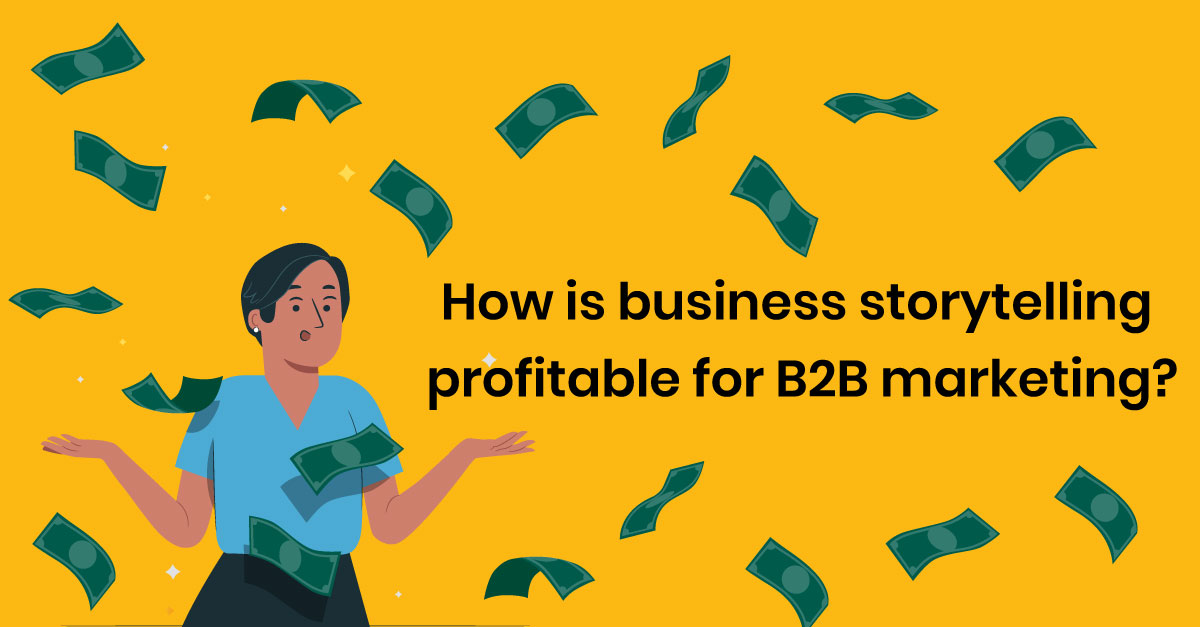If you are not telling a good story, you are leaving money on the table. The ultimate goal of a marketer is to build a referenceable customer base. Business Storytelling is the path to reach this goal.
We are living in a digitally drenched world driven by data where storytelling is even more essential. Stories surround us. We continuously stay woke, feel, emote, connect, engage, and narrate our own stories. As humans, our ability to tell stories is the single most significant characteristic that separates us from every other living being. Why? Because through stories, we can establish connections with people, and this connection has a viable commercial aspect in the world. Using the power of stories, we have created everything from cultures and beliefs to empires and enterprises. Creating stories for enterprises is where data-driven business storytelling finds its rightful place.
Business Storytelling is Logic Wedded to Emotion
Business storytelling is a subtle art backed by science. Stories evoke emotions and build connections because a good story can influence how an audience thinks and behaves. Scientifically it is proven that listening to a tale releases chemicals in our brain that makes us connect and engage. Similarly, business storytelling helps brands define themselves to their audience and build a deeper connection. Once a brand creates a story that empathizes and engages with their customers, they start utilizing their marketing budgets more effectively resulting in better RO(M)I.
Stories Sell Because They Connect
In B2B marketing, a good story can drive potential prospects to connect and engage with a brand. Targeted contextual content allows brands to engage with their customers’ thoughts and behaviors. Without them, a business or brand has half a story – their data points. When we look at a datasheet or statistics, it is difficult for prospects to connect emotionally with numbers. Enter stories! Stories help companies sieve data and draw out insightful and actionable content that speaks with the target audience. And that is what We-Storytellers does.
Business Storytelling is the Sweet Spot in Marketing Outreach
From a marketing perspective, the endgame of a story or content is to make sales happen and build brand loyalty. When potential prospects feel emotionally connected with a brand, they will be loyal because they can relate to the brand story. Loyal customers are true active advocates of a brand who can recommend it to others based on their experience. But how do we make a potential prospect reach a buying decision?
Empathy evokes emotion. Therefore, it is equally essential for content to be empathetic and build a connection with the customer. No matter how many assets need to be created, every piece of content in every possible form, whether a blog, video, podcast, or email, should be contextual and resonate emotionally with customers to build a deep connection at every touchpoint.
Once the connection is made and a potential prospect is converted to a loyal customer, it is imperative for the content process to continuously churn out stories that resonate with them, reaffirming a customer on every step that the brand is there for them. Keeping a constant empathetic and emotional connection would contribute to building a recurring profit and lead to the formation of a referenceable client base.
Business Storytelling Means Business
Thus, business storytelling is a potent and highly profitable investment in B2B marketing. The aim is to increase the reference pool of customers through consistent empathetic business storytelling. Therefore, investing in a strong content marketing team and strategy equips marketers with the gear to convert potential prospects into loyal customers and advocates. In addition, a good brand story that engages the audience will lead to better ROIs. The latest statistics show that about 40% of marketers believe content marketing is an essential part of their overall marketing strategy, 77% of organizations state they have a content marketing strategy, and 70% of marketers actively invest in it.
Storytelling Has Evolved From AIDA to Data-Driven-AARRR
As per the traditional marketing approach of AIDA (Attention, Interest, Desire, and Action), fuelling the buyer’s journey with the right content at the right time would convert a prospect into a customer, retain them, and turn them into advocates recommending the brand. But the world is becoming more data-driven and socially active, and in this scenario, the traditional approach has been reinvented to include more aspects.
Coined by Dave McClure, AARRR (Awareness, Acquisition, Activation, Retention, Revenue, and Referral) is a new-age content marketing funnel that combines data and storytelling to deepen the bond between the customer and brand. This pirate framework narrows down the metric a business needs to focus on and gives them the edge of data to decipher and plan the right content for the right audience.
This is where storytelling becomes a bit more intensive and engaging. In our recent Story Talkies with Rangapriya Kannan, we touch upon how the importance of stories has grown in this data-driven world. Technology is being used to monitor a customer’s digital interaction with a brand, and the record behavioral data is then being used to make better campaigns to accelerate conversions. In addition, business storytelling in this context helps build traction by establishing deeper personal connections with a potential prospect.


